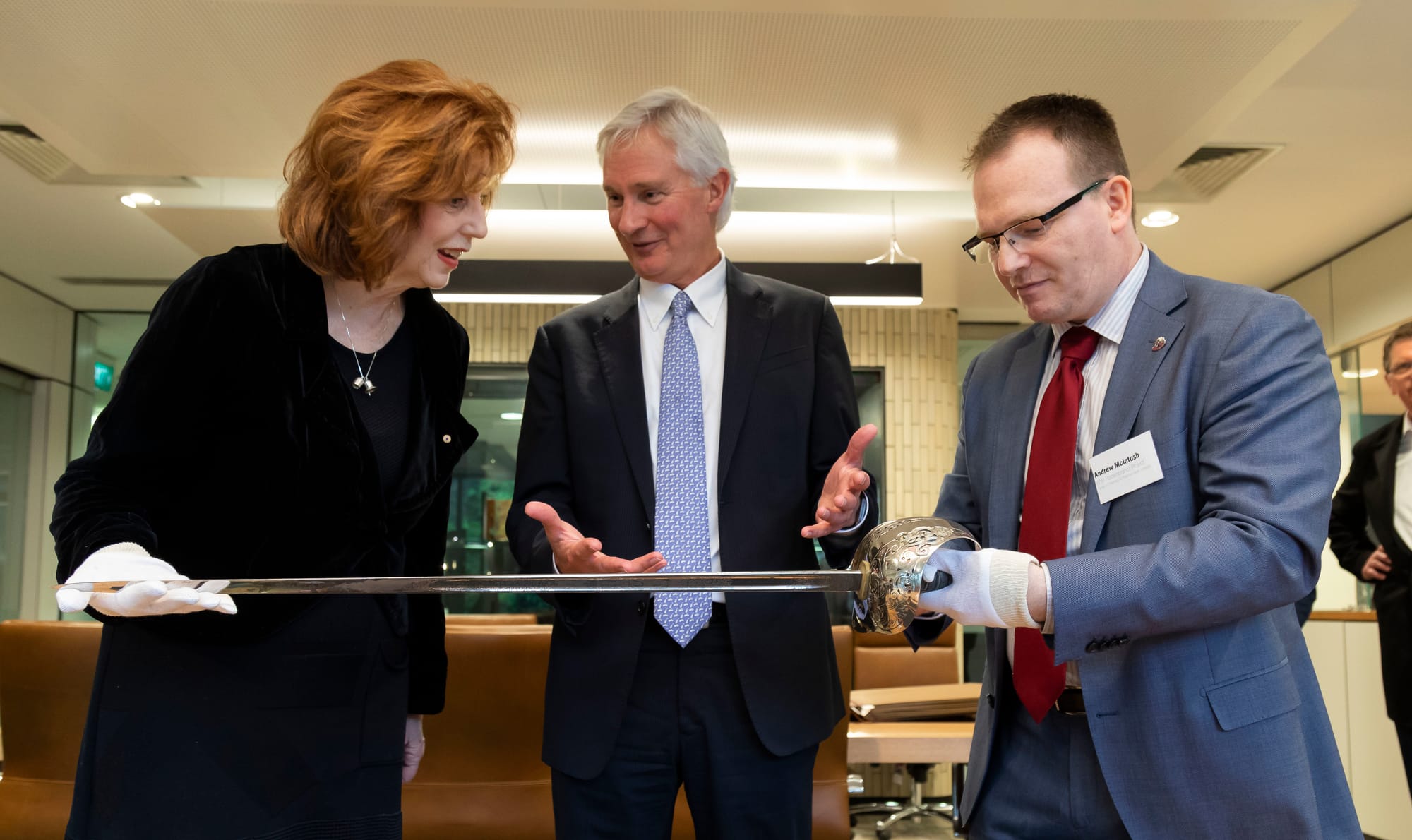
“In my mind,” said former Victorian premier Ted Baillieu, “he is the greatest Australian of all time.”
‘He’ is Sir John Monash.
“I say that not just for his military service,” Mr Baillieu said, “but for civic service as well, and intellectual service. He was an artist, a writer, a military man, engineer, lawyer, aesthete, designer and a leader. A leader amongst leaders.”
Mr Baillieu – also the chair of the Victorian Anzac Centenary Committee – was speaking at a Monash University Faculty of Pharmacy and Pharmaceutical Sciences event this week to commemorate the 100 years since Sir John was knighted by King George V, on 12 August, 1918, in France.

At the commemoration event, artefacts belonging to Sir John were unveiled in a private viewing for some of his descendants. The artefacts included documents, certificates and a ceremonial sword awarded to him. Monash University is, of course, named in his honour – the first Australian university to be named after an individual.
His achievements are remarkable. Sir John was the commander of the entire Australian defence force in 1918, in World War I, as a general. He was also a doctor of laws, civil law, and engineering. He was chairman of Victoria’s State Electricity Commission (SEC), an engineering expert in reinforced construction of bridges and railways, the chairman of the body that built Melbourne’s Shrine of Remembrance, vice-chancellor of Melbourne University, and president of the Australian Association for the Advancement of Science.
Read more: Sir John Monash the man ... more than a soldier
Sir John Monash also had a close and largely unknown association with the Faculty of Pharmacy and Pharmaceutical Sciences. The faculty – then called the Melbourne College of Pharmacy – was established in 1881, well before the rest of Monash University, which opened in 1961.
Monash University President and Vice-Chancellor, Professor Margaret Gardner AO, President and Vice-Chancellor, said the Faculty of Pharmacy and Pharmaceutical Sciences “feels a particular connection to Sir John”.
When he was at his most active in public life in Victoria, the old college was also in full swing.
“There were students and alumni of the college who served under him in World War I,” she said. “Some 200 pharmacy students and alumni were in World War I, and many of them were under his command or serving alongside him.”
Approximately 20 of those 200 died in active service.
Recently, Faculty of Pharmacy and Pharmaceutical Sciences' Andrew McIntosh – a faculty business manager but also the head of the faculty’s WW1 Remembrance Project – unearthed evidence that Sir John visited the old college in 1927, only three years before he died, to award prizes and open the academic year.
“He spoke, for example, of how important original research was for education,” said Professor Gardner. “That is something that is very important to the University today.”
During the 1927 visit he awarded a certificate to a certain student.

“The top student in the correspondence course,” said Professor Gardner. “That student was a man called Ernest Dunlop, later known across Australia as [Australian war doctor] Weary Dunlop. Quite a coincidence that one great military leader should, unbeknownst to him, present an award to someone who would follow in his footsteps giving great service to the Australian community.”
Professor Gardner said she was “surprised but also enlightened” by the research done by the Faculty of Pharmacy and Pharmaceutical Sciences to establish connections between the old pharmacy college and Sir John.
The faculty’s Dean, Professor Bill Charman, said the value that Sir John held dearest was service to his community and country.
“In celebrating our connection with him, we also remind ourselves of the higher purpose that the University serves,” he said.
The artefacts were bequeathed to Monash University in 1963 by Sir John’s only child, daughter Bertha Bennett. Her grandson, Michael Bennett, was the first descendent of Sir John’s to study at Monash University, in the 1970s.
The university archives and the library worked together to display the items in the Special Collections Reading Room at the Sir Louis Matheson Library, including several books owned by Sir John that have been a part of the rare books collection.
Due to the fragile nature of the documents, the library digitised the three certificates signed by King George V pertaining to Sir John’s knighthood.
“It’s amazing for us to see these documents, and it’s marvellous to see them kept in such good condition,” Professor Charman said. “He wanted to know that his achievements would be recognised, and that’s what we see.”
Mr Baillieu said a bust of Sir John Monash has pride of place in the Victorian Parliament, and when he was premier he would encourage his cabinet ministers to touch it for inspiration.
“What Victoria enjoys today is very much a product of Sir John,” he said. “The electric lights that switch on, the bridges we drive over every day, his history is all around us. These remarkable documents and objects are an honour and privilege to see.”





